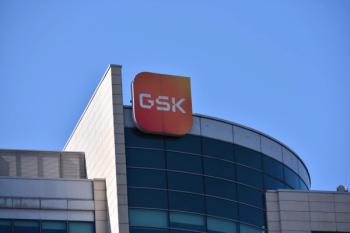
- BioPharm International-02-01-2014
- Volume 27
- Issue 2
Novel Expression Systems Opening CMO Opportunities
CMOs may find opportunities in alternative expression services.
Novel expression systems are becoming practical alternatives to the more common mammalian cells (e.g., Chinese hamster ovary [CHO]) and microbial expression systems used for decades for biopharmaceutical manufacture. Vaccine production will likely be the area first and most affected by plant-based manufacturing platforms. With dramatically lower manufacturing costs expected, these will be the products most likely to radically impact bioprocessing in coming years. An increasing percentage of facilities involved in plant cell systems are outsourcing some of their production (1). Because of the relatively unique knowledge required in these systems, it could be a growing opportunity for CMOs that possess this specialized expertise over the coming years. And once the technology is more fully proven, with the benefits plant expression can offer, plant expression could become a common offering by CMOs, along with microbial and mammalian options.
A variety of vaccines are currently in development using different plant expression systems. Much of the push and initial funding for these technologies and products has come from the US biodefense R&D sector and its efforts to develop capabilities for rapid manufacture of tens, if not hundreds, of millions of doses of pandemic influenza and other vaccines. One such endeavor is Project Greenvax, a consortium of companies (Texas Plant-Expressed Vaccine Consortium), which is nearing completion of a tobacco plant-based modular facility in Texas that will be capable of producing more than 100 million doses of influenza vaccine/month (>1.2 billion doses/year) at a cost of pennies, not dollars, per dose.
With plants able to make recombinant proteins often at much lower cost and in vast quantities, and with these technologies approaching commercialization, biopharmaceutical developers may be considering their use more than they currently do. Yet truly novel expression systems, such as plants and transgenic animals, have yet to make much of an impact on marketed products or even those in later-stage development. The industry remains satisfied with continued use of the proven and safe CHO, E. coli, and yeast systems.
That satisfaction may shift as newer expression systems offer increased cost-effectiveness. Plant expression, with production costs considerably lower than conventional technologies, could well result in some companies adopting non-conventional (for biopharmaceuticals) pricing strategies, such as selling vaccines and other products for a few dollars per dose. This strategy may be feasible given production costs of pennies/dose, allowing acceptable profit margins even at very low prices, and enabling companies to emphasize high-volume markets, with this ideal for vaccines.
Current state of plant cell capacity utilization
BioPlan Associates looked at developers’ plant cell manufacturing capacity, as well as current and planned outsourcing of production in this area. Relatively few respondents to BioPlan’s study are involved in plant cell manufacturing. Over the past seven years of studies that the survey has asked about plant expression, only about 4% of respondents indicated participating in these production operations. By comparison, between two-thirds and four-fifths of respondents have been involved in mammalian cell culture during that same time frame.
Given the small sample size for plant cell systems, the data can be susceptible to fairly large swings. Even so, the results give a window into this area and some data to compare with anecdotal evidence.
In BioPlan’s 2012 study, respondents’ plant cell capacity utilization was at its highest level in several years, with biomanufacturers operating at 65% of total capacity. So, current plant expression-based capacity and facilities are actively being used. Since 2006, capacity utilization rates in this area have grown at a compound annual rate of 4%, far outstripping comparable utilization rates for mammalian cell culture (-0.7%) and microbial fermentation (-0.8%).
Where the CMOs fit in
CMOs reported zero capacity use for plant cells for 2013, with few, if any, mainstream CMOs yet offering these newer systems (1). The data, however, represent capacity utilization, rather than capacity in general, and should not be confused with a lack of opportunity for CMOs to be involved in plant cell manufacturing.
What is interesting to compare is planned plant cell capacity increases against planned outsourcing activity. And this is where the trends become interesting for CMOs. In 2012, on average, biomanufacturers involved in plant cell systems planned to increase their total production capacity by just 14% over the next five years. That compared to a 43% planned increase in mammalian cell culture capacity and a 30% increase in microbial fermentation capacity.
Planned capacity expansions for plant cell systems appear to be trending downwards, with the 14% planning a capacity expansion down from highs of 29% and 34% in recent years. At the same time, separate data indicate that respondents are increasingly outsourcing plant cell manufacturing and will continue to do so over the next five years (1) (see Figure 1).
In comparison with other manufacturing platforms, plant cell culture tends to be much less performed in-house, a fairly dramatic shift from years past. This past year, just 28.6% of plant cell culture users reported performing these activities 100% in-house, down from a range of 69-89% during the previous seven years.
What’s more, an increasing percentage of respondents are projecting future outsourcing of plant cell production. BioPlan’s latest study found 57.1% of respondents involved with plant cell production planning to do some outsourcing over the next five years.
Taken together, these trends suggest that rather than increase their plant cell capacity over the next few years, biomanufacturers are planning to look to CMOs for plant cell-based production.
The emerging opportunity
Novel manufacturing systems for influenza and biodefense vaccines are becoming increasingly necessary and are being developed to meet the need for rapid manufacture of these vaccines. These new technologies must be scalable to exceptional levels that could reach as many as hundreds of millions of doses per week per facility or process line. These volumes are needed as population counts continue to grow in emerging markets, which will need coverage in the event of a serious threat. And in case of a severe pandemic, everyone everywhere could even require immunization. The development of many plant expression systems is being driven by this requirement for rapid and disseminated production, and it seems unlikely that these efforts will be declining anytime soon.
As plant-based influenza and other vaccines are developed, there is likely to be a shift in vaccine manufacture, and the current near-monopolies that exist among vaccine manufacturers will be challenged. With plant cell manufacture—both cultured cells and whole plants—generally offering significant cost-savings for large-scale manufacture, we can expect more established CMOs and also new specialty CMOs start to offer plant expression-based services. While data represent the views of only a small number of companies involved in plant cells, the results suggest that the industry will put CMOs’ plant cell service capacity to good use.
References
1. BioPlan Associates,
Eric Langer is president of BioPlan Associates, tel. 301.921.5979,
[email protected]
, and a periodic contributor to Outsourcing Outlook.
Articles in this issue
almost 12 years ago
EMA Collaborates with HTA Assessment Networksalmost 12 years ago
Tackling the Challenge of HOS Determinationalmost 12 years ago
The Affordable Care Act's Impact on Innovation in Biopharmaalmost 12 years ago
Cytotoxicity Risks in Single-use Media and Bioreactor Containersalmost 12 years ago
Defining Quality Metrics is No Easy Taskalmost 12 years ago
BioPharm International, February 2014 Issue (PDF)Newsletter
Stay at the forefront of biopharmaceutical innovation—subscribe to BioPharm International for expert insights on drug development, manufacturing, compliance, and more.




